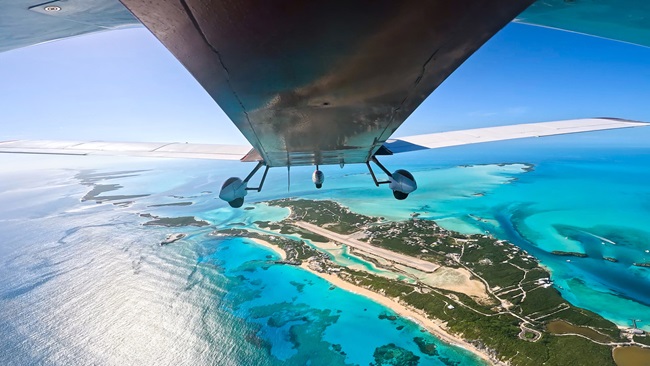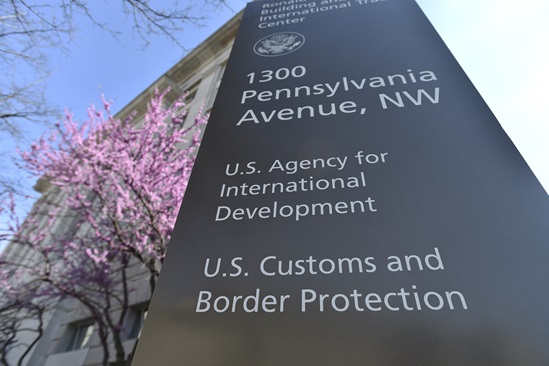Flying in Ukraine
General aviation in a time of war
By Ben Moses
One of the seldom discussed casualties of war is general aviation.

Nowhere is this truer than in Ukraine, where no aviating—private or commercial—has been allowed since the Russian invasion. And for good reason. Anything that’s flying over this country now had better be connected to the Ukrainian military or it will be shot down, no questions asked.

In 2017, I wrote about my chance encounter with a Ukrainian pilot, Yuriy Yakovlyev, co-founder of Aeroprakt Ltd. and designer of the company’s series of light sport aircraft (see “Flying in Ukraine,” July 2017 AOPA Pilot). Recently I found myself in Kyiv preparing a documentary about the war, and I sought out Yakovlyev to catch up. The stories he told me over a long lunch include his family’s very personal horror story of the first months of the war.
On February 24, 2022, Russian forces crossed the northern border between Belarus and Ukraine and charged south toward Kyiv with orders to destroy airfields, among other high value targets. One of the first places they hit was the large Antonov airbase north of Kyiv, where they destroyed the largest cargo aircraft in the world, the Antonov An-225 Mriya, long a symbol of Ukrainian technological and aviation prowess. They bombed Kyiv’s two main airports, Boryspil and Zhuliany (Sikorsky International, named for Kyiv native Igor Sikorsky, inventor of the first viable helicopter design). They also hit the airports in Odesa, Kharkiv, and other major cities.
Everyone knew the invasion was to take over Kyiv and decapitate the government. That meant the Russian army would be coming very close to the suburbs where Yakovlyev and his family lived. So, two days after the invasion, as Yakovlyev’s son joined the Ukrainian army, Yakovlyev piled his son’s wife and daughter and his own wife and daughter into their cars to evacuate to Poland, where Aeroprakt has an assembly plant. He says it’s fortunate that he keeps both diesel fuel and mogas at the Aeroprakt airfield near his home, or else he would not have been able to even fill up his cars for the trip; there were thousands of cars on the highways fleeing west.
In the first days of the war, so many people were headed into Poland that the wait at the border crossing was three or four days. Yakovlyev and his family first drove to the little resort town of Kosiv, in the Carpathian mountains in western Ukraine, where his friend, the town’s airport manager, found them temporary lodging. A week later, while the Russians were bombing cities in the east and after border traffic in the west died down a bit, they crossed safely into Poland.
Yakovlyev’s small Aeroprakt airport is 30 kilometers west of Kyiv. It’s Aeroprakt’s club facility, operations center, and where he and others hangar their airplanes. On the runways Yakovlyev practices for the short-field competitions he enters around the world. (He holds many records.)
Planning for the future of his business, he and his team had almost completed the construction of their new large production facility for the company’s airplanes. To expand, they needed to move out of the cramped facility in Kyiv that had served them during the formative years of the business.
As the Russians moved south toward Kyiv they were pushed away from the city and stopped by the Ukrainians a kilometer from Aeroprakt’s runway. For the next several weeks attack helicopters, mortars, and artillery shells flew across what only a few days earlier was a peaceful private field.
The Russians, with their instructions to take out airports, did not distinguish between jet ports and private fields, and not only traded fire with the Ukrainian army but also lobbed mortars at the Aeroprakt runways. A Russian bomber targeting a Ukrainian military position on the edge of the airfield missed, and its two 500-kg bombs landed on the Aeroprakt field. Only one exploded. But that was bad enough.
When the invading army finally retreated from the area, Yakovlyev and the Aeroprakt team returned to assess the damage: The main runway and most of the taxiways were damaged, the windows and interior of the flying club ops building were destroyed, the roof of the main hangar was mangled, gaping open, and the eight aircraft parked inside were all seriously damaged. Worst of all, the new, nearly complete production hangar was dramatically damaged.
Click images to enlarge and view captions.








Yakovlyev returned to Poland and his family, knowing now that his Aeroprakt team were going to have to start from scratch. How do you maintain an international aviation business in the middle of a war? You dare not start up again in the capital city, surrounded by invaders. What would it take to operate the company from the small assembly plant in Poland? He had the massive hard drive with all the company’s business and technical data, and while several of his key employees had stayed in Kyiv, they could not transport to Poland the huge machinery necessary to build aircraft from scratch. Yakovlyev discussed with his team the most critical components owners around the world needed. Maybe he could at least make those in Poland.
The most requested replacement part was the nose gear. Many pilots, especially new pilots, seem to porpoise landings too often, and Aeroprakt flyers are no exception.
But when you land hard nose-first and the nose gear collapses, the next to go is the propeller. That was the second most requested part. But props and damaged engines would be a matter for Rotax Engines, which has distributors throughout the world.
Creating new nose gears was a problem Yakovlyev could solve, but not without some difficulty. There are good machine shops in Poland, and Yakovlyev had brought with him the specs for every part in all his airplanes. He set to work finding who could supply him with everything needed to build the gear. Despite the war close by, he was able to continue fulfilling customers’ most oft-requested needs.
The third most requested Aeroprakt part was the windscreen. That would be another problem altogether. Recreating the necessary molds was one challenge, but finding a good oven for the exact heat and pressure forming was harder. On the internet Yakovlyev found what looked like a reparable oven in Europe and ordered it. But when it arrived it didn’t take him 10 minutes to have it delivered to a scrap metal yard and dumped, it was that poor.
Finally, after several more weeks, he got a proper oven shipped to his Poland facility and started making new replacement windscreens for customers—different ones for each Aeroprakt model, each requiring a different mold, different oven temperature, different bending, and more.
This Ukrainian pilot who had been designing and building aircraft for 45 years since he first built a copy of Burt Rutan’s “Quickie” at the age of 20 in the Volga steppes of the Soviet Union—creating it from only a three-view drawing in a magazine for modelers—now used his well-honed skills and the tools he could find in Poland to keep his company’s owner/pilot customers flying and happy. Even the fiberglass parts. Only problem was that he was working alone and he’s highly allergic to epoxy resin. Usually someone else in the company does this part of the job. He went through a lot of masks over the next months.
His attitude is,“We will survive this and be stronger.”After the safety of his family, Yakovlyev says his highest priority was to be able to keep everything necessary to be able to repair the more than 1,400 Aeroprakt airplanes in service all over the world. The last thing he needed was an AOG call from Australia or the United States while in the middle of a war.
It astonished many that he was able to accomplish that in this terrible period, but he did. And as a result offers to purchase new Aeroprakt airplanes poured in from everywhere. Partly, he thinks, to support a Ukrainian aviation business during the war, but also because word got out that the company was up, running, and fulfilling orders almost as if nothing had changed.
Meanwhile, back in Ukraine: Not long after Yakovlyev got his family safely established in Poland, he learned from friends that Russian troops had moved into the suburban Kyiv area near his house. Camping in a nearby forest, the Russian soldiers broke into every home whose owners had evacuated. “For fun,” the soldiers reportedly said. They stole whatever they wanted from the houses. One of those houses was Yakovlyev’s.
Three weeks later the Russians gave up on getting into the capital city. Those who were not killed or captured pulled out and left the area. Yakovlyev says that when he and his wife were able to get back to their home they discovered more devastation inside—appliances destroyed, beds, chairs, and furniture broken and used for firewood, his electric car parked outside used for target practice. Before departing, the pillagers had shot its tires out, taken a knife to the seats, and put several bullet holes through the roof.
But the most repulsive thing they did Yakovlyev said in a simple, painful sentence: “They left shit all over the house.” He meant that literally. “Everywhere, not just in the toilets, which themselves were never flushed.”
Being unable to fly in wartime is understandable. Yakovlyev was relieved and grateful his family were all safe. Many Ukrainians have not been so fortunate. But having your life’s work destroyed brings the war very close to home. And the real assault, the insult, is when your home is invaded, defiled, and destroyed by people who don’t know you and have no real idea why they are even there—and who would kill you if you had been there.
Journalists tell us that is the case with many of these soldiers who were sent on this mission to take over Ukraine. Yakovlyev talks about it clearly. “We all felt like they were following Vladimir Putin’s maxim: If I can’t have you, I will destroy you.”
But Yakovlyev and his family have survived, and Aeroprakt is still building airplanes and repairing others. His attitude is, “We will survive this and be stronger.” Or in the words of an ironic line from the Ukrainian national anthem, “We are not dead yet.”
Ben Moses is a documentary filmmaker and pilot.


